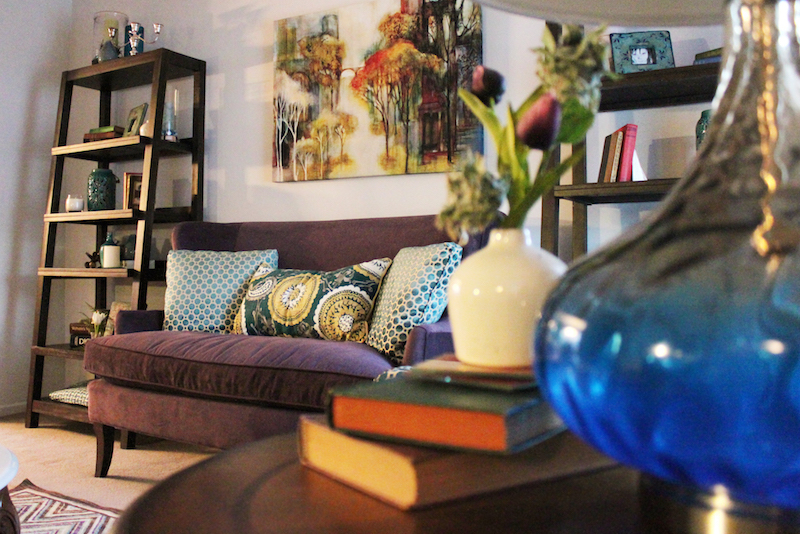After another year of working from home and sheltering against more extreme weathers, many homeowners are looking for ways to make their dwellings more climate resilient, energy efficient and healthy.
So, what once might have been a basic remodeling project, can now be an opportunity to prepare homes for climate challenges.
“It’s time to bring more awareness to how we plan and maintain our homes,” said Christine Julian, owner of Christine Julian Interiors and Leadership in Energy and Environmental Design (LEED) affiliate. “When people are thinking about a remodeling project, we can look at bigger issues that may affect indoor air quality, energy bills and climate resiliency.”
Julian offered several suggestions for common remodeling projects:
- Bathroom: Upgrade fixtures & save water
Old toilets can consume on average six gallons per flush. According to the Environmental Protection Agency (EPA), the average family can save nearly 13,000 gallons of water per year by replacing old, inefficient toilets with WaterSense labeled models. They could also save more than $140 per year in water costs and $2,900 over the lifetime of the toilets.
Newer low-flow faucet and showerhead options with the WaterSense label can save up to 30 percent over the standard fixtures. WaterSense labeled bathroom sink faucets and accessories that use a maximum of 1.5 gallons per minute can reduce a sink’s water flow by 30 percent or more from the standard flow of 2.2 gallons per minute, according to the EPA.
- Kitchen: Choose Energy Star & sustainable products
When remodeling a kitchen, the easiest way to save energy is to choose Energy Star rated appliances. If you want to save even more energy and enjoy quick and easy temperature control, go all-electric with an induction cooktop and convection oven to reduce energy use by up to 74 percent compared to gas options.
Another easy energy-efficiency upgrade is adding insulation blankets and sleeves around pipes located on exterior walls. Freezing pipes can cause major damage if they burst. If you’re replacing plumbing on outside walls, this is a great opportunity to add insulation. If it’s a simpler renovation, plumbing can be protected by simply adding wraps around them.
When selecting cabinetry, look for Forest Stewardship Council (FSC) or Sustainable Forest Initiative (SFI) certified wood. Look for makers that utilize formaldehyde-free woods and non-VOC coatings.
“Countertops should be made of durable materials with the smallest environmental impact,” said Julian. “Look for options made from recycled materials such as glass, or check out the beautiful quartz products that resemble real stone, but are made from recycled content and non-toxic materials and LEED, Declare and Living Building Institute certified.”
- Laundry room: Save water & water the garden
This is a great place to consider installing a greywater valve system that diverts water from your washing machine drain to your garden. Check first to see if your municipality allows this. If it does, this reuse option saves water and can be turned on and off during summer and winter seasons. Note that greywater cannot be diverted from toilets, kitchen sinks or dishwashers.
- Old furnishings: Repurpose, restore or donate
When you’re remodeling, don’t throw out the old. Could furnishings be positioned in a different room? Could a coat of paint or varnish revive a piece of furniture? If an item isn’t going to work in your home, there are several options for recycling, repurposing or upcycling your old fixtures. Habitat ReStores will take many gently used appliances, fixtures, kitchen cabinets, doors, cabinets and furniture. windows flooring, unused lumber and more. You can also purchase items for your project here. Check RecycleSpot.org for locations near you to donate your items.
- New furnishings: Select sustainable furnishings & finishes
Look for products that are made from recycled, reclaimed or rapidly renewable materials. Also check for sustainable certifications such as Greenguard for indoor air-quality and low-emitting materials, Declare for a nutrition-like label for building materials, Living Building Challenge for its avoidance of “Red List” materials and low-emitting compliance, and LEED for energy efficiency and low carbon emissions.
When considering a material’s life-cycle costs, many products are more cost efficient in the long run because they last longer and may be more energy efficient or require less upkeep and maintenance than products that are initially less expensive.
- Energy: Choose energy efficiency throughout
There are many simple things you can do for energy efficiency to be more resilient during extreme weather conditions.
Start by checking with your local utilities for energy-efficiency and renewable-energy incentives for home-improvement projects. For instance, Evergy offers free home energy audits and energy-efficiency upgrade incentives through a new Pay As You Save (PAYS) program. It also offers free or discounted smart thermostats that allow you to track and customize controls in your home, while giving the company the ability to reduce energy usage during peak demands. See your options at Smart Thermostats.
Air leaks throughout your house can be one of the biggest causes of high energy bills and an uncomfortable house. Leaky windows can be major source of energy inefficiency, however, they are not the only culprits. According to Energy.gov, some of the areas where air sealing can improve a house’s comfort and energy efficiency include the attic, pipe or duct shafts, soffits, staircase framing, porch roof, chimney and flue shafts, attic access, recessed lighting, air ducts, whole house fan, fireplace wall, rim joists, windows and doors. Even adding Insulated window treatments can help warm a home in winter months. Look for Low-VOC window treatments with a high insulation factor.
“All of the materials, furnishings and window treatments that we bring into our home have a direct impact on our sustainability efforts and our physical and mental well-being,” said Julian.
Photo: Christine Julian Interiors





